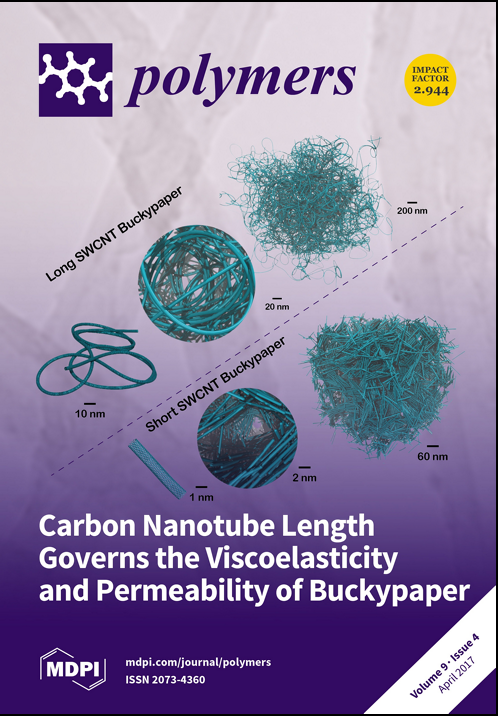 The effects of carbon nanotube (CNT) length on the viscoelasticity and permeability of buckypaper, composed of (5,5) single-walled CNTs (SWCNTs), are systematically explored through large-scale coarse-grained molecular dynamics simulations. The SWCNT length is found to have a pronounced impact on the structure of buckypapers. When the SWCNTs are short, they are found to form short bundles and to be tightly packed, exhibit high density and small pores, while long SWCNTs are entangled together at a low density accompanied by large pores. These structure variations contribute to distinct performances in the viscoelasticity of buckypapers. The energy dissipation for buckypapers with long SWCNTs under cyclic shear loading is dominated by the attachment and detachment between SWCNTs through a zipping-unzipping mechanism. Thus, the viscoelastic characteristics of buckypapers, such as storage and loss moduli, demonstrate frequency- and temperature-independent behaviors. In contrast, the sliding-friction mechanism controls the energy dissipation between short SWCNTs when the buckypaper is under loading and unloading processes. Friction between short SWCNTs monotonically increases with rising length of SWCNTs and temperature. Therefore, the tan δ, defined as the ratio of the loss modulus over the storage modulus, of buckypaper with short SWCNTs also increases with the increment of temperature or SWCNT length, before the SWCNTs are entangled together. The permeability of buckypapers is further investigated by studying the diffusion of structureless particles within buckypapers, denoted by the obstruction factor (β). It is found to be linearly dependent on the volume fraction of SWCNTs, signifying a mass-dominated permeability, regardless of the structure variations induced by different SWCNT lengths. The present study provides a comprehensive picture of the structure-property relationship for buckypapers composed of SWCNTs. The methodology could be used for designing multifunctional buckypaper-based devices.
for LaTeX users @article{ZShen2017-9,
author = {Z. Shen and M. Röding and M. Kr\"oger and Y. Li},
title = {Carbon nanotube length governs viscoelasticity and permeability of buckypaper},
journal = {Polymers},
volume = {9},
pages = {115},
year = {2017}
}
\bibitem{ZShen2017-9} Z. Shen, M. Röding, M. Kr\"oger, Y. Li,
Carbon nanotube length governs viscoelasticity and permeability of buckypaper,
Polymers {\bf 9} (2017) 115.ZShen2017-9
Z. Shen, M. Röding, M. Kr\"oger, Y. Li
Carbon nanotube length governs viscoelasticity and permeability of buckypaper
Polymers,9,2017,115 |
![]() mk@mat.ethz.ch
1 out of 810 entries requested
[H-factor to-date: > 0]
mk@mat.ethz.ch
1 out of 810 entries requested
[H-factor to-date: > 0]

mk@mat.ethz.ch 1 out of 810 entries requested [H-factor to-date: > 0]